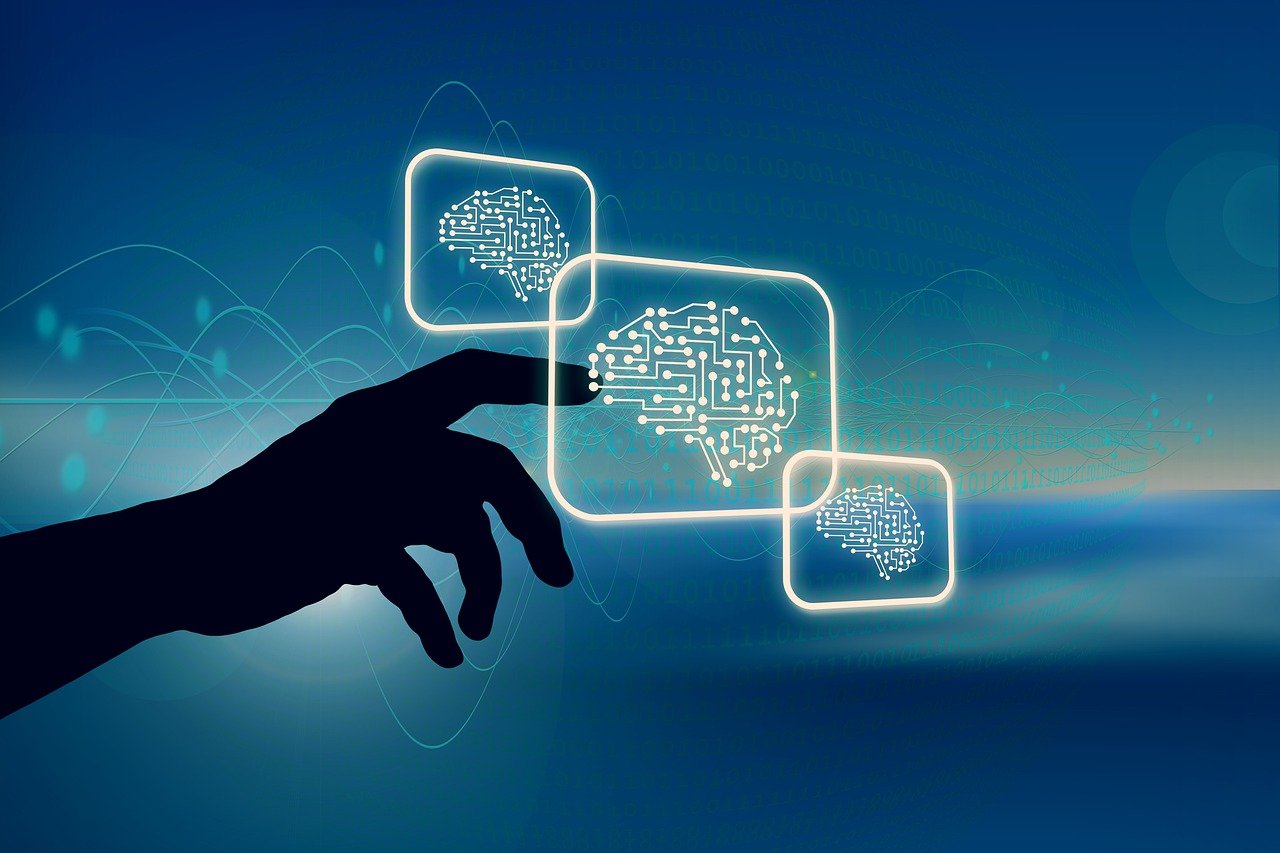
The Battle for Our Souls: AI versus Advanced Intelligence
In this piece, references to ‘Advanced Intelligence’ will be spelled out in full, while ‘AI’ will reference Artificial Intelligence.
What is the Advanced Intelligence Age you may ask? People will ignore this question to focus on the AI-driven, Technology Age. But things are moving so fast that many will be caught off-footed, and completely miss the boat (some age-old vessels still make the best analogies 😅). Therefore, let me use the popular view to establish my premise. Many would be of the view that the Technology Age began in 1974. That was with the invention of the first successful commercial personal computer, the Altair 8800. As I’ve said, I beg to differ with this popular opinion regarding the Technology Age. So, to clarify, let’s begin with a couple of definitions.
Getting the language right
Technology: the application of scientific knowledge for practical purposes, especially in industry; or, machinery and equipment developed from the application of scientific knowledge.
Artificial Intelligence: the ability of computer systems to perform tasks that simulate human learning, comprehension, problem solving, decision making, image/audio/video construction and autonomy, or the scale and complexity of which exceed human capability.
Advanced Intelligence: an evolution of human mental capability that manages the evolution of our environments, and harnesses and leverages the utility of AI technology.
Now, the first has existed since the origin of man, as seen in the image below. However, it is a fustian (pretentious…see what I just did there?) term. Most people blurt out some variation of the second, without understanding. On the other hand, the latter has pinpoint accuracy to our current era.
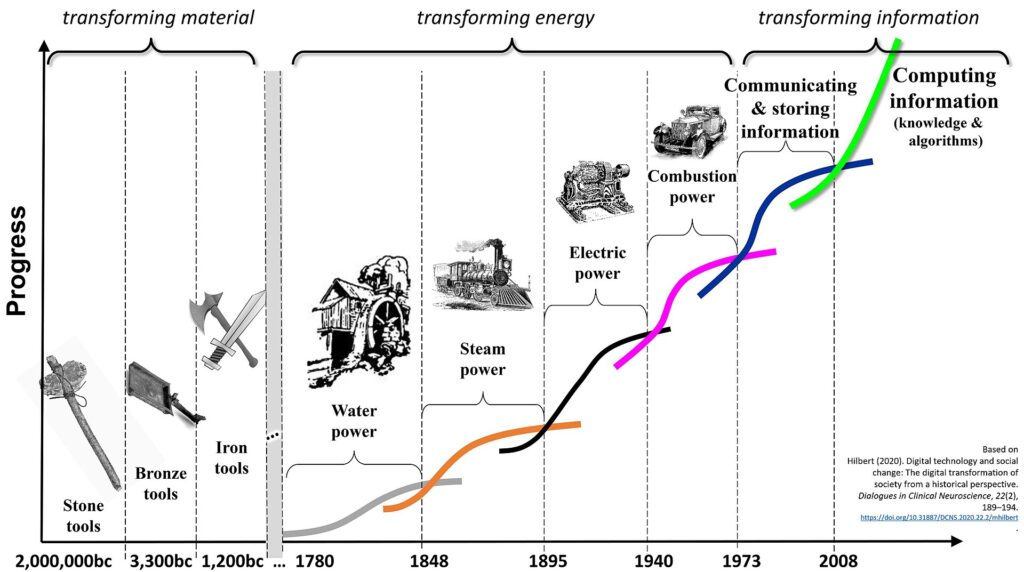
So, I believe that we should always consider entities in terms of function, purpose, and utility; not form. Now, let me say that again in English. We should look at things in terms of what they do, deliver, how they make us feel, and what value they add to our lives; not just what physical attributes they possess. Let’s look at AI in that context.
The history of AI
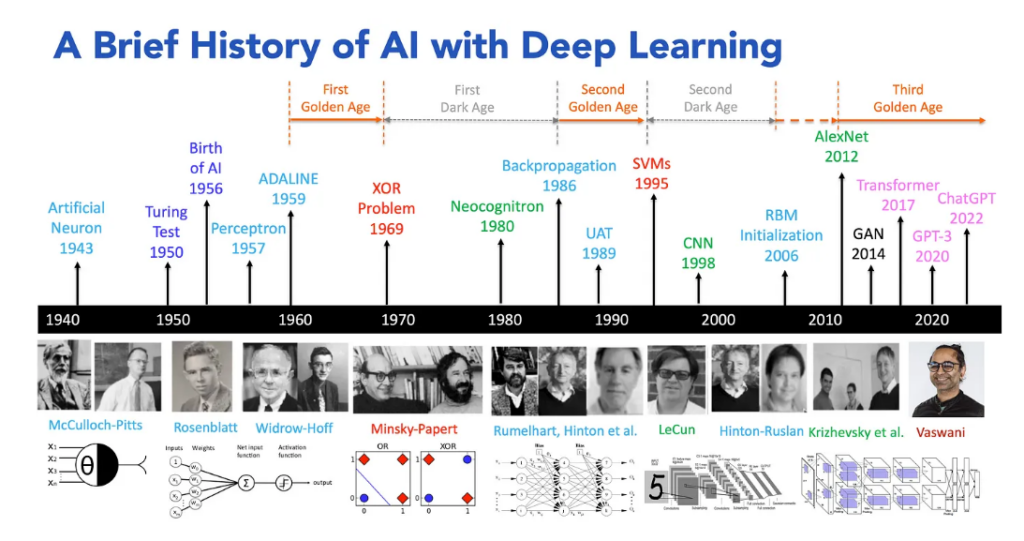
As an example, let us use the history of AI. Tell me, what is wrong with the above image? No offense to LM Po but, while appearing to be more comprehensive than that below, can you understand anything it is saying below the labels indicating the various ages of AI?! I can’t!
And that is the problem with the current discourse around AI. It’s all over the place, and often unintelligible.
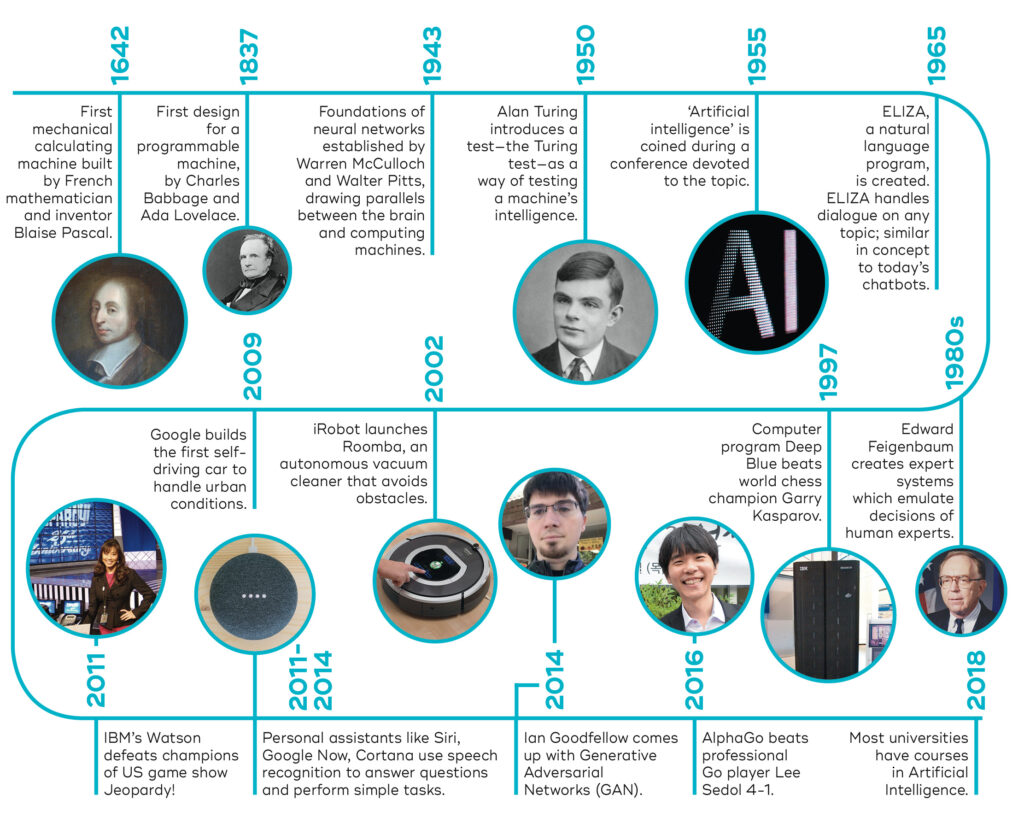
What is the point? – Advanced intelligence, through learning…duh!

Now that we have glossed over (yes…yawn!) the theory and evolution of AI, let’s get to the crux of the matter. Evidently, the problem with AI is that people are focusing on the wrong thing(s)!
To re-emphasize, the worst mistake people make is to focus on features and attributes (trinkets as you may) instead of the substance of a thing. In other words, too many people are focusing on the history and evolution of form of AI; not function. AI, the colloquial artificial intelligence is all about the features. Correspondingly, ChatGPT, image creation, robotics, cutting corners using machines, Alexa, self-driving cars are all we hear about. But how do these things actually serve us? What is their utility? Ultimately, how do they make our lives qualitatively better, or more advanced? Unfortunately, those tooting artificial intelligence, with blinders on, as the next great thing, are eagerly giving up control of their lives to features and contraptions that they don’t even truly understand.
Advanced Learning
On the other hand, Advanced Learning is a relatively different matter. Advanced learning is about individuals getting smarter, and more in control of everything that surrounds us. Ergo, Advanced Intelligence.
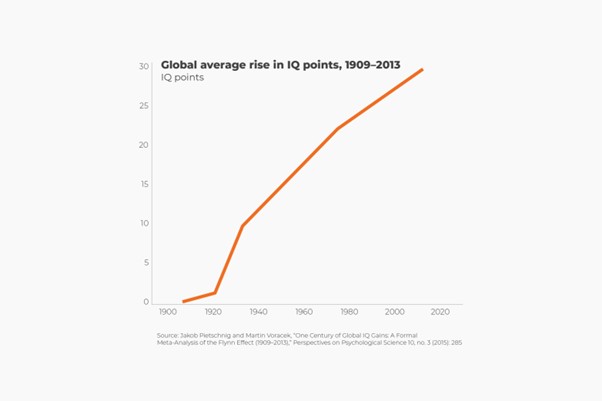
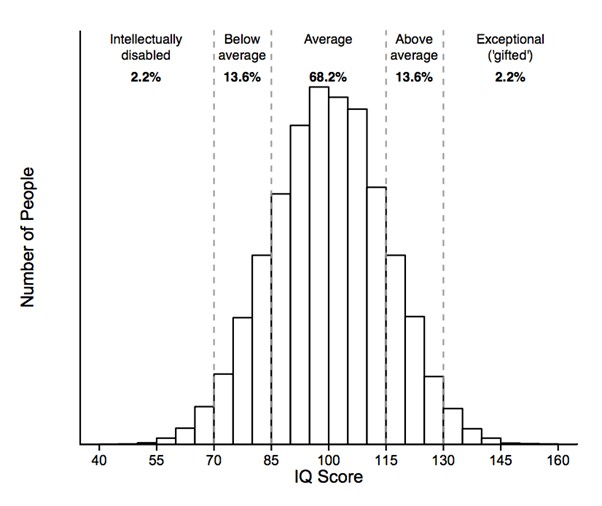
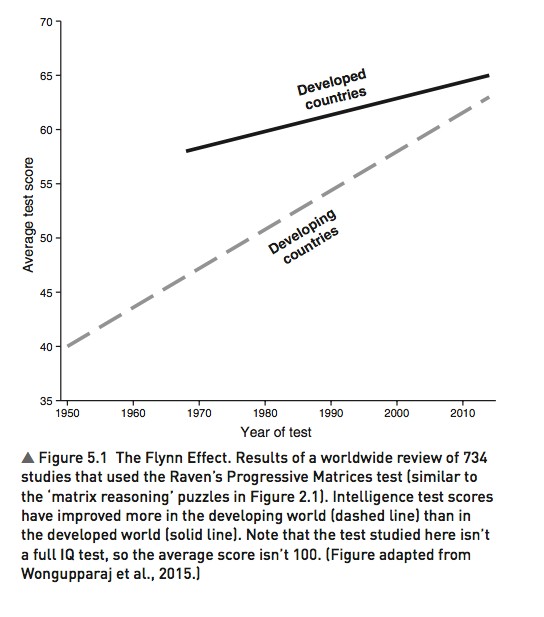
You see, with the growth in average global IQ over the last century, the corresponding potential for human capability is immense. Everybody is being brought along. As a consequence, the global intelligence floor is being raised. And that my friends, is the whole point of this! Not the fancy features and gadgets, but making the whole world smarter, so that we are in better control of our environments.
So, do I need to say anymore? Do I close the piece off here?
Well, maybe not…because there is a bit more knowledge needed to bring it full circle.
Therefore, before I close the loop, let me touch on the some of the prevailing AI debates that are leading us down the wrong garden path. There are many sources such as https://beam.ai/agentic-insights/the-5-biggest-ai-myths-and-the-truth-behind-them highlighting the AI myths, but in the spirit of advanced intelligence, let me simplify these myths – the KISS principle.
Random Myth A: Sky falling on my head myth: AI will make human jobs obsolete
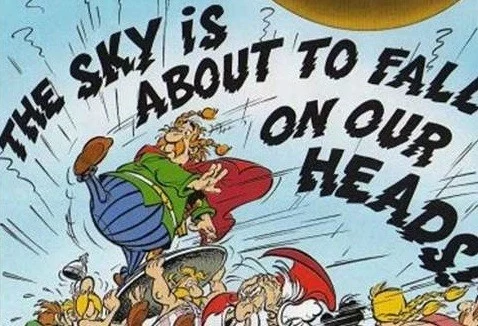

I recently had a discussion argument with a friend acquaintance about AI, and he started out by chest-thumping about being an expert in the field. In return, in not so polite language, I dismissed him; refusing to engage in an obsolete argument. Actually, I told him that it was a st***d premise he was making. Definitely not how to make friends, my friends! You see, my point is as follows.
Looking back, did jobs in the energy sector disappear with the decline of coal power? Similarly, did copy typists, secretaries and photocopy machine attendants (Gen Zs and Alphas, they actually once did exist) being made obsolete by networked personal computers lead to the extinction of office management and support services? No. Energy sector workers grew in the fields of electrification, hydro, solar, gas and wind power. Our copy typist from my early days in advertising, became an administrative assistant. Resultantly too, an IT department was created for office administrative support, doubling the number of people employed in that capacity.
The truth
Hence, revisiting my first image at the top of this piece. The progress of (wo)man has always entailed the obsolescence of the old, and replacement with new skills. Correspondingly, this brings with it labour market growth, to serve new, more complex technologies. It’s not just the rudimentary, panacea argument of “reskilling the workforce”. The essence of debunking this myth mirrors Darwin’s theory of evolution – those who are most adaptable to progress, are best equipped to thrive. Finally, human jobs in the fields of research and data scientists; cybersecurity and corporate/ industry ethics; and computer, robotics and industrial engineering will all grow out of AI – top to bottom.
Random Myth B: Movies-generated – Robots are going to subjugate humanity


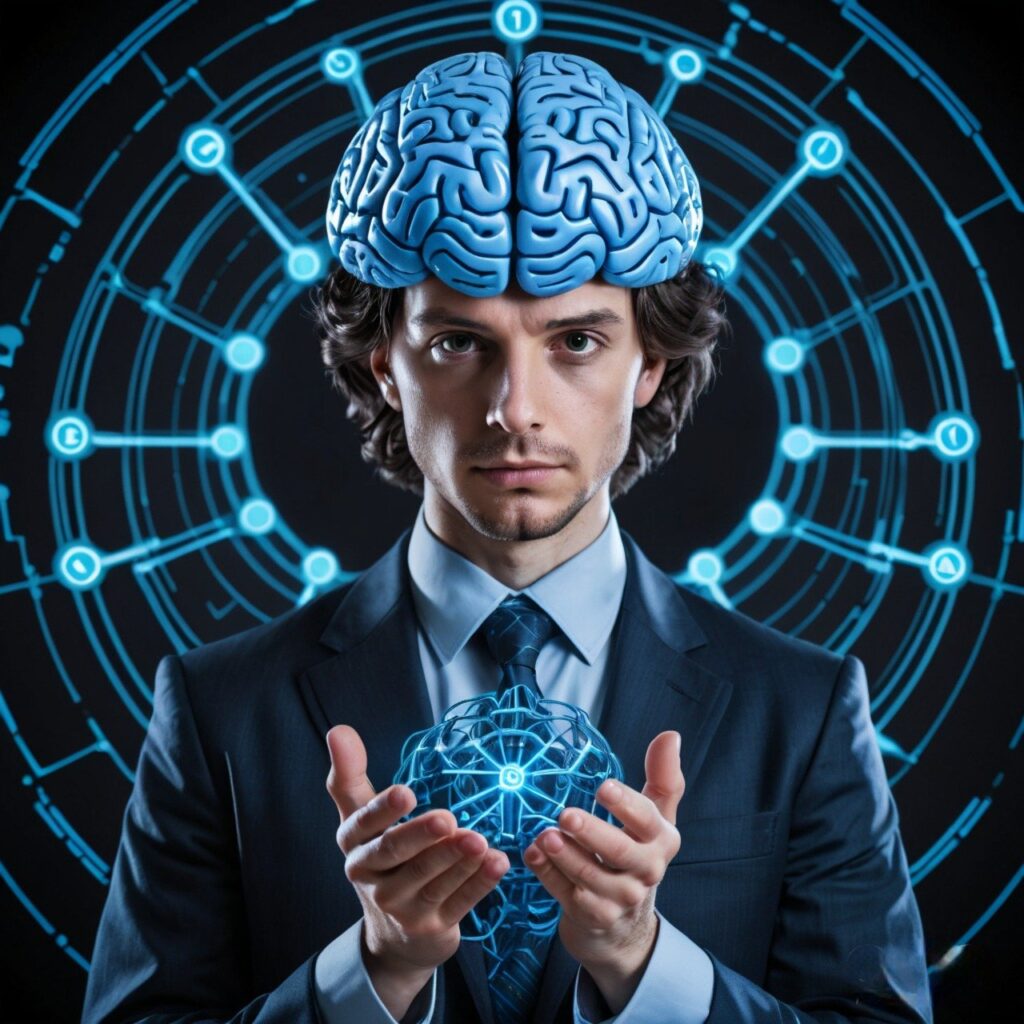
Look…you know that is just exaggerated iconography on the extreme right. But you get my point! Popular culture has spurred our imaginations to run away with us, on both extremes. In reality, robots will not develop human insight to eventually overrun us; neither will advanced intelligence grow our brains till they sprout out of our crania. Our future is the ordinary (wo)man with advanced intelligence adapting, and taking control of how AI makes our lives more efficient.
The truth
These are the current types of AI; and none of them is sentient.
Machine learning
Machine learning independently accesses and uses human generated data to function. For example, image & speech recognition, and virtual support agents. Thus, its value is only as good as the data fed in for it to access.
Generative AI
Generative AI develops new content based on large training datasets; again human-fed. Here, some examples include speech-to-text, image creation and ideation; and most famously ChatGPT.
Predictive AI
Following on, predictive AI, as its name implies, can be used to forecast results by analyzing patterns. It uses machine learning to learn and adapt, and also perform statistical analysis. However, like machine learning, it is only as good as the human-fed data and patterns fed into it. Here, we see marketing strategies, healthcare diagnoses, and supply chain management as examples.
Computer Vision
This version of AI enables machines to see the world visually. Here, technically it covers areas such as surveillance and facial recognition, object tracking, image classification and medical image analysis. You all know the Ring doorbell, that is being installed in so many homes? Well, there you go.
Enterprise AI
Now, this is the big leagues. Enterprise AI brings it all together at scale. It brings together the various applications in an industrial setting, to improve efficiency and decision-making. Here, we find real world applications such as fraud detection, production line & supply chain planning & management, optimised resource allocation, and predictive maintenance optimisation.
Catching a wake up, this is not the kindergarten league of the college kid using ChatGPT (I’m very aware that is an oxymoron 🙄) to cheat on his term paper. Yet once again, it is Advanced Intelligence that gets the optimal results out of enterprise AI.
Self-Aware AI
As happened with that friend acquaintance, some arguments are just plain st***d. Those putting forward self-aware AI as something real are chasing a pipe dream…and they’ve watched The Terminator, and all The Matrix versions way too many times!
Random Myth C: Woe is me – Humans will lose skills & intelligence by relying on AI
If you have ever heard a parent lament how things today are not as good as they used to be, this is right down that alley.
The truth
Just because Gen Zs don’t pay attention, focus, or work as hard at the same things as Millenials, doesn’t make them less skilled, nor less intelligent. They are simply more focused and skilled at what matters in their lives today.
As a result, when you view all these AI myths and classifications with the lens of Advanced Intelligence, we won’t all get paranoic and hysterical, thinking that the sky will fall on our heads.
Advanced intelligence mitigates against AI risks
And herein lies the real utility of Advanced Intelligence. It confronts and manages the true realities of AI. It isn’t driven by the self-interest, fertile imaginations and misdirected greed for new income streams of those who have perpetuated the propogandist AI myths.
What exactly is Advanced Intelligence?
I’ve spent paragraphs on correcting perceptions of AI, and how to harness it’s utility to humankind. In return, I owe you an explanation on exactly what is this mitigation, that I call Advanced Intelligence? Unlike the paragraphs needed to understand AI, it is simply, and only needs one paragraph. Remember KISS?!
Advanced Intelligence is enabling learning for our children and youth in professional and life skills, versus education for a job sector career. It’s building awareness of what the world will look like in 5, 10, 20, and 30 years. We need skills in problem solving, analytics, creativity, innovation, and social sciences, rather than singular training to be a lawyer, banker or accountants. Science. It is still about pure sciences, social sciences and the arts; but it’s about learning and education for outcomes, not course material for a title.
The real risks of AI
Okay, as I approach my closing, I don’t want to scare you all, more than the myth purveyors already have. However, take heart. The real risks of AI can all be mitigated by Advanced Intelligence.
1. Ethical misuse
Unfortunately, these cover a wide range of manifestations, from academic dishonesty, to cyberbullying, to social manipulation, to deepfakes, to outright criminal activity. Similarly, the range of mitigating Advanced Intelligence runs from common sense, to moral obligations, to superior human mental capability. You apply these 3 things, and AI can be managed to mitigate the ethical risk.
2. Deepfakes
Although deepfakes are a subset of ethical misuse of AI, I isolate it specifically because of its prevalence, and because it is related to the next point; truth!
Many of us, both whose work and private lives entail significant time online, come across deepfakes all the time. I know that more often than not, I can identify them as such. The telltale signs are many. The same energy put into building the capabilities of AI should be put into building tools to identify and expose deep fakes. So, that is another potential revenue stream for AI cybersecurity.
3. Truth – Darwinian, or Orwellian evolution?
But also linked to this is the evolved definition of truth. Unfortunately, the woke wave led to the ridiculous notion that each person has their own, unique truth. No. Pure unadulterated truth is singular, universal, and incontrovertible. As AI develops, veritable truth must be paramount, and legislated into its application. Advanced Intelligence demands that we revert to, and perpetuate, the universal gold standard of truth.
AI presents us with the choice for the future of humanity. Red pill versus blue pill, is actually choosing either Darwinian, or Orwellian evolution. Humanity is at a crossroads, and can either drink from the fountain of progress, or the poisoned chalice. Thus, Advanced Intelligence can help us choose to develop enhanced capabilities to survive and thrive in our evolving environment, or be dominated by totalitarian control, surveillance, propaganda, and manipulation of truth.
4. Garbage in – garbage out
AI is only as robust and reliable as the datasets it feeds off. Seriously, can you imagine AI spitting out results, and driving functions, based on absolutely erroneous data; fed negligently or maliciously?! If human beings are robotically (pardon the pun 😅), and unthinkingly depending on AI, the more serious the AI function, the bigger the potential disaster. Again…say it with me class…the human intuition, and the application of Advanced Intelligence can sniff out bad outputs coming out of poor datasets, and inputs. Inconsistent outputs simply don’t gel with the silent voice of our life experiences speaking to us.
5. AI Hallucinations
AI hallucinations simply spit out wrong information based on AI’s inherent biases, based on how their datasets were created. These arise when AI tries to erroneously fill in trend gaps, lacks real-world understanding, or has training data limitations. It is purely due to this lack of human insight, that it is unable to correct for the understanding of anomalies.
Now say after me, ‘the mitigation is… 🎼🎵…’.
6. The weaponisation of AI
Just think about it. In an increasingly volatile world, we elect leaders for their judgement, temperament, experience and wisdom. Then consider, an entity without judgement, insight or understanding of nuance, or reason controlling autonomous weapons, cyber warfare, covert operations, and counter-espionage?! A shocking thought!
If we ever approach the brink, the mitigation of Advanced Intelligence, and human insight, reason and judgement, are what will save the day.
7. Data privacy and security
Without extensive data, AI is nothing! In the quest to continually improve AI, the demand for data is ravenous, and all consuming. It will devour and absorb everything it comes in contact with. So, it starts with general non-intrusive information, but then graduates to more and more personal data. The more AI can mimic human behaviour, the better it performs its desired function. Once we cross that rubicon of the perfect AI, everyone’s private, personal information is at risk.
We must keep it top of mind that in this world, there are many bad actors. From hackers, to criminals, to political adversaries, to those who strive to control the new world order, whose intentions will not be noble. Their agenda is singular; defeat their adversaries at all costs. They will go beyond all limits of privacy and security safeguards to do so.
Borrowing from the past, for the future


In conclusion, I’m pretty sure you know the gentleman on the above left. But do you know the man on the right? I want to leave you with a famous quote from each of them. Let’s see if you know, or can hazard a guess on who said which.
“All theory, dear friend, is grey, but the golden tree of actual life springs ever green.”
“Imagination is more important than knowledge. For knowledge is limited to all we now know and understand, while imagination embraces the entire world, and all there ever will be to know and understand.“
What these wise men both knew is that, true Advanced Intelligence comes from a human life, well-experienced, and with a thirst for knowledge. Consequently, we also know that machines do not possess the attributes of which they reference in these quotes; only humans do.
It is time for corporate, social and country leaders to take the lead in instilling learning and adaptation for Advanced Intelligence. Thus, as the world moves into the new intelligence age, AI is simply a tool to make our lives more efficient, and actually easier to manage; not an entity to take over our lives.
The most intelligent person in human history
By the way, we all know that the man on the above left in the images above is Albert Einstein. His name is synonymous with intelligence. The man on the right is Johann Wolfgang Von Goethe, the German polymath (person with deep knowledge across many fields), who Einstein called, ‘the last man in the world to know everything!’.
As the saying goes, those who do not learn from the past, are doomed to repeat it. The above quotes from these 2 wise men, and their professional achievements, are a clear guiding light for us on how to navigate the course ahead with AI, in this age of Advanced Intelligence.
For strategic advisory that will leverage uncommon sense and drive your bottom line, get in touch with us on [email protected].
Follow on:



